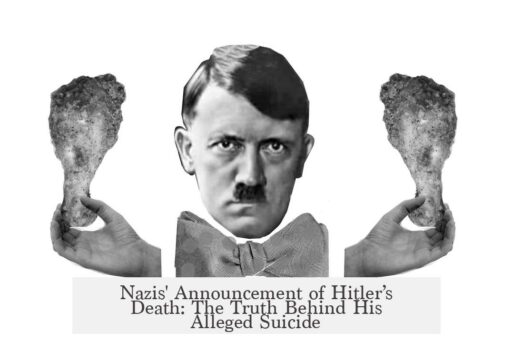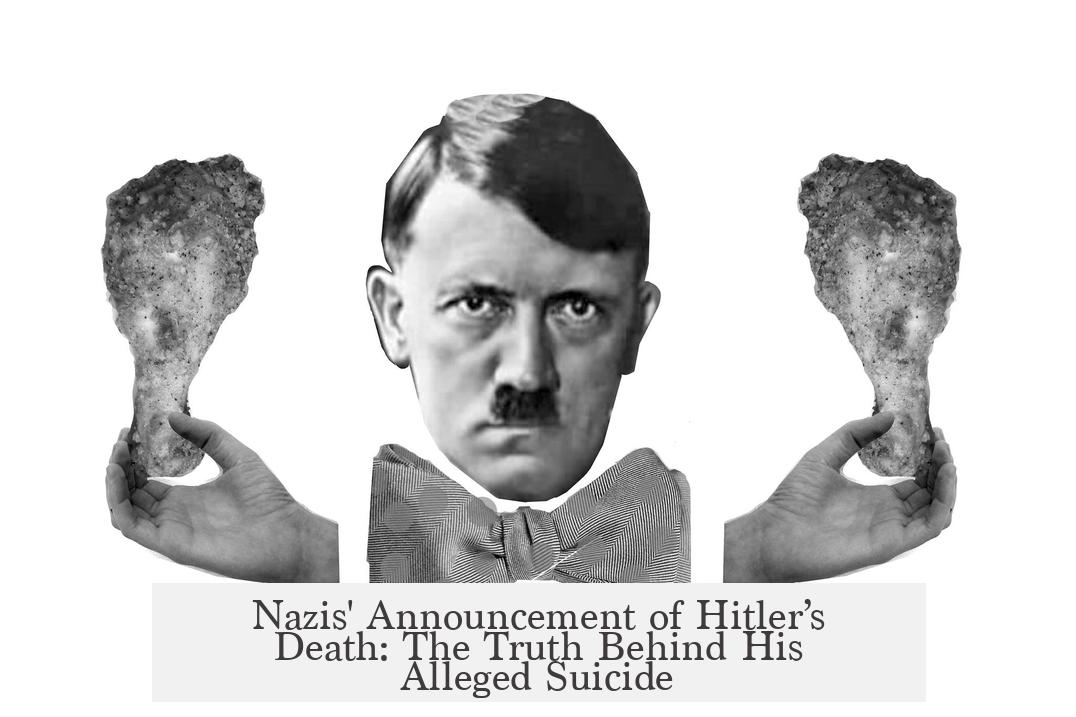The Nazis announced Adolf Hitler’s death on May 1, 1945, through a radio broadcast that employed vague and euphemistic language. They described Hitler as having “fallen for Germany” while fighting “to his last breath against Bolshevism” at his command post, deliberately avoiding any mention of suicide. This announcement and subsequent speeches by his successor, Karl Dönitz, were ambiguous about the exact circumstances surrounding Hitler’s death.
The initial radio broadcast presented the news as a heroic death in battle rather than a suicide. The official statement declared:
“The Fuhrer HQ reports that our Fuhrer Adolf Hitler this afternoon in his command post in the Reich chancellery, to his last breath fighting against Bolshevism, fell for Germany.”
This phrasing was carefully crafted. It sidestepped the facts known by many eyewitnesses that Hitler had taken his own life on April 30, 1945, in his Berlin bunker. The Nazis framed the death to maintain morale and portray Hitler as a martyr rather than acknowledging the suicide.
Karl Dönitz, who Hitler named as his successor hours before his death, also handled the announcement cautiously. His statements echoed the ambiguous tone of the broadcast and did not confirm suicide. According to Dönitz’s memoirs (Ten Years and Twenty Days), he was unaware at the time of the true nature of Hitler’s death. Dönitz assumed that Hitler had died fighting until the end, as the announcement suggested.
The timeline of official recognition was influenced by communication constraints amid Berlin’s fall. On April 30, Dönitz received a telegram from Martin Bormann confirming his role as Hitler’s successor. Later, on May 1, Bormann sent a second telegram stating that Hitler’s testament was now effective. Dönitz claims ignorance of Hitler’s death when he first received these messages and disregarded Bormann’s wishes to delay public announcement until a meeting could occur, which never did as Bormann died fleeing Berlin and Goebbels committed suicide on May 1.
This cautious approach to announcing Hitler’s death aimed to control the narrative. It delayed explicit admission of suicide, reflected uncertainty among Nazi leadership, and tried to sustain a semblance of resistance.
Besides Nazi announcements, the Soviet Union initially restricted information and issued conflicting accounts about Hitler’s death. Soviet reports claimed they recovered burnt remains of Hitler and Eva Braun, though some eyewitnesses stated the bodies were mostly destroyed by fire. In June 1945, the Soviets propagated contradictory stories: that Hitler died by cyanide or that he escaped Germany. Historians largely view these accounts as Soviet misinformation designed to confuse and politicize the facts about Hitler’s demise.
Despite these official statements and disinformation campaigns, eyewitness testimonies and historical research confirm that Hitler committed suicide on April 30, 1945. He fatally shot himself in the head in the Führerbunker as Soviet forces closed in on Berlin. Eva Braun, his wife of just one day, died alongside him by cyanide poisoning.
- Adolf Hitler’s death was not openly declared a suicide by the Nazi regime.
- The initial German radio announcement on May 1 used evasive language, describing him as “fallen while fighting”.
- Karl Dönitz, Hitler’s successor, was vague about the death and unaware it was suicide at first.
- Communications and telegrams from Martin Bormann confirmed the succession but delayed detailed public disclosure.
- The Soviet Union released conflicting reports, partly to sow confusion and obscure the truth.
- Eyewitness accounts confirm Hitler died by self-inflicted gunshot on April 30, with Eva Braun dying from cyanide.



